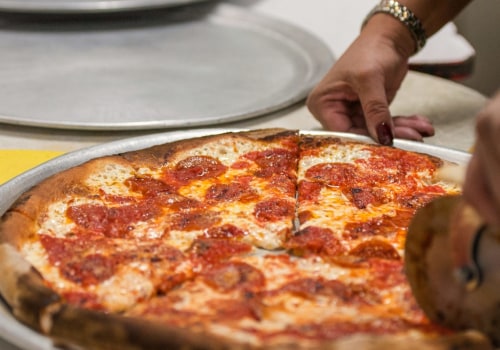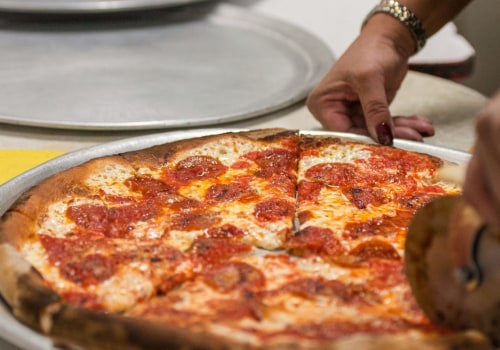Bagel with cream cheese and smoked salmon. Bagel is widely associated with New York. Cheesecake has been around for as long as anyone can remember. Egg and cheese roll.
Bagels and smoked salmon are the best dish to melt. Both had a long culinary history before joining together in the new world. Bagels arrived in the Lower Side East with the immigration of Polish Jews. Smoked salmon is a little more complicated, a mix of the Scandinavian tradition of saltwater salmon and Native American smoking and drying techniques.
The sandwich also includes some American cream cheese and sometimes also Italian onions and capers. The combination can be found at every bagel store in town, but Russ & Daughters is a piece of living history. Opened in 1914, the iconic “appetizing” store specializes in the Jewish tradition of serving foods combined with bagels. Unlike delicatessen stores that serve meat, the store focuses on dairy products (cream cheese) and expertly cured fish, such as caviar, sturgeon and salmon.
Trash is for eating in Rochester, where residents go crazy over the strange trash can. The story goes that a long time ago, a university student asked restaurateur Nick Tahou for a meal with “all the garbage”. Tahou agreed and created a combined dish with two hamburgers and a choice of two side dishes: homemade French fries, pasta salad and beans dipped in tomato sauce and hot sauce. Everything is mixed before eating, with rolls or white bread as a side dish.
Now, the name Garbage Plate is a registered trademark, but similarly named versions are served all over the city with a variety of proteins, such as sausage and eggs. Nick Tahou Hots is still the ideal place to learn about Rochester's strange history and enjoy an ideal meal late into the night. Cheesecake was part of the global culinary canon long before the imposing metropolis of New York City claimed that soft cheesecakes date back to ancient Greece. However, an American created the breakthrough that would become New York Cheesecake.
In an attempt to reproduce Neufchatel's French cheese, a man named William Lawrence of Chester, New York, stumbled upon an even richer and creamier result without ripening. That creamy cheese became the basis of the simple New York cheesecake (along with cream, eggs and sugar), which grew in popularity in the early 20th century. The most venerable version came out of Junior's kitchen in downtown Brooklyn in 1950, and resulted in a dense, smooth, almost spicy dessert that still attracts fans from all over the region and around the world. Both pastrami and corned beef usually come from the same cut of meat, usually a breast, although their preparation methods are quite different.
Pastrami is usually smoked after curing with a dry mix, while corned beef tends to be cured in brine and is never smoked. Mix the two with some rye bread. This, friends, gives you a delicious pastrami and corned beef sandwich. You'd be hard pressed to find a more American dish than hot dog.
The traditional hot dog consists of a sausage placed in a longitudinal bun, covered with various condiments, such as mustard, tomato sauce, horseradish and cheese. Try the New York hot dog, which is usually seasoned with mustard, sauerkraut and onion. Manhattan clam chowder is a tomato-based soup (unlike cream-based Boston clam chowder) that will keep you warm on a cold New England night. The soup contains spices such as garlic, salt, pepper, thyme and parsley with basic ingredients including potatoes, carrots, tomatoes and, of course, clams.
It's interesting to note that while the dish bears the city of Manhattan in its name, the soup actually originated in nearby Rhode Island. While fried chicken and waffles may seem like a relatively new mix of sweet and delicious foods, combined main courses have a much longer history than you might expect. It dates back at least to the 1860s and it was popular to serve waffles with chicken and sauce for Sunday lunch. Nowadays, the dish has become better known as a food for the soul, and waffles are served like breakfast waffles, with butter and maple syrup.
Although the name does not imply it, bacon and cheese with egg & is, in fact, a sandwich and, moreover, quite infamous. This versatile sandwich can be prepared in many ways, with a mix of the way eggs are cooked (from two scrambled eggs to an egg easily) and bread holds it together. Bagels and rye toasts are the most popular options. Sometimes simply available as “the breakfast sandwich” on the menus of some restaurants, bacon and egg with 26% cheese is the best way to start a morning in New York City.
Hot dogs are as common in New York as yellow taxis. Traditionally made with ground pork, veal, or both, these sausage-type sausages are seasoned with garlic, mustard and nutmeg before being packaged, cured, smoked and cooked. Travel to Brooklyn to visit Original Nathan's Famous Frankfurters, opened in 1915 by German-born Charles Feltman, who conceived the hot dog while pushing a cake cart along the Coney Island waterfront. Or stop by the street carts on the corners of the city for sausages with garlic, granulated mustard and spicy sauerkraut.
Try making your own. Cumberland hot dogs with charred tomato sauce or sweet chili peppers Derived from the Yiddish word for dumplings, a knish is a thick, dense dough that is baked, roasted or fried. Potato dishes with spicy brown mustard are a New York classic, although mushrooms, spinach and other vegetables usually reach their pasty center. Another Eastern European gift from the 1900s, knishes are commonly sold in restaurants, Jewish delicatessen stores, butchers and street vendors from Brooklyn to the Bronx.
Wash your pizza with a ball of cold, colorful sparkles. Spumoni, a cross between Italian ice cream and ice cream, originated in Naples as the ancestor of Napoleon's ice cream. Spumoni, like its descendant, is a trio of flavors, usually chocolate, pistachio and cherry, although vanilla, cannoli or cremelata usually appear instead of cherries. This recipe inspired by sparkling wines The 10 best gastronomic things to try in RomeThe best foods to try in ParisThe 10 best gastronomic things to try in TokyoThe best foods to try in Lisbon.
Many restaurants serve good meatballs for soup, but Joe's was the one who sparked New York's obsession with this delicacy when it opened its doors in Flushing in 1994. At most bagel stores or delicatessen stores around the corner, you can find flavors such as poppy seeds, sesame, cinnamon with raisins, and a New York favorite called “everything”, topped with poppy seeds, roasted sesame seeds, dried garlic, dried onion and salt. There are cleverly adapted regional games all over the country; in central and western New York, the hot Rochester reigns. Many New Yorkers first noticed the vertical roasted pork topped with pineapple called top when it appeared in the window of Taco Mix in East Harlem, which originated as a cart owned by Jorge Sanchez in 1991. The first chicken and waffle gathering took place in Pennsylvania, but a version of the dish inspired by Southern food appeared on the scene at the Wells Supper Club in Harlem in the mid-20th century. Although there are now countless restaurants across the city serving similar porterhouse steaks, Luger is still the best place in New York to eat dry-aged beef.
Amy's Bread, at Chelsea Market in New York City, offers an excellent interpretation with a fresh and spongy cake-like base greased with an airy chocolate and vanilla frosting. Buffalo wings, the favorite food of sports fans, are named after the city of their origins. Although it sounds like a French dish, Eggs Benedictines (two halves of an English roll topped with Canadian bacon, a poached egg and hollandaise sauce) are a New York creation from start to finish. Since 1905, when Gennaro Lombardi began serving the first charcoal pies in the United States at the homonymous Little Italy pizzeria, New York City has been known as a city of charcoal-based pizzas.
Often imitated, never duplicated, Dominique Ansel's Cronut began a national obsession with hybrid foods. Founded in the 1970s by James “JB Bromell” and Johnsie Mitchell, this is one of the few remaining soul food destinations managed by black women and that once dominated Harlem, Bedford-Stuyvesant and Prospect Heights. . .




Leave a Comment